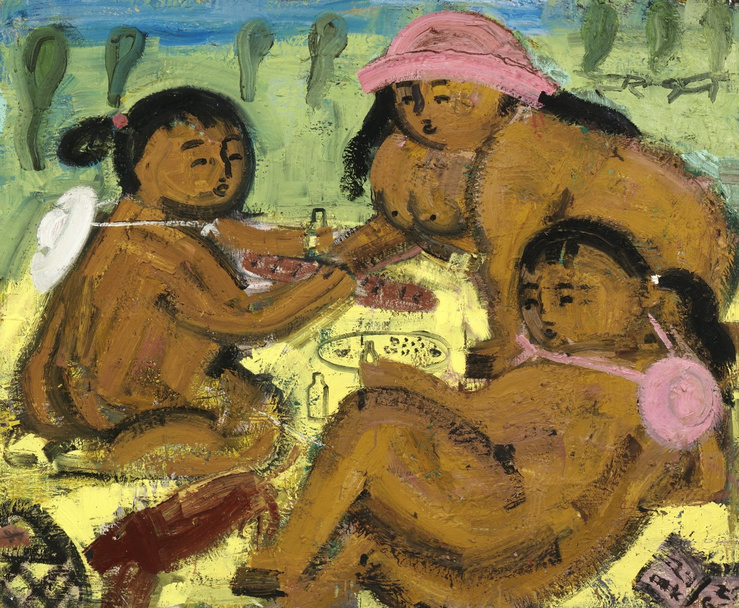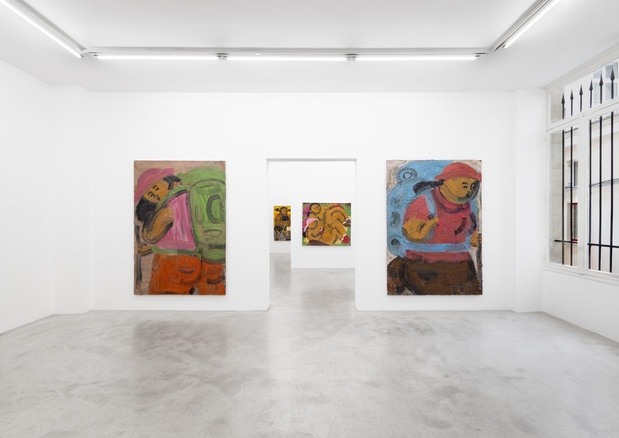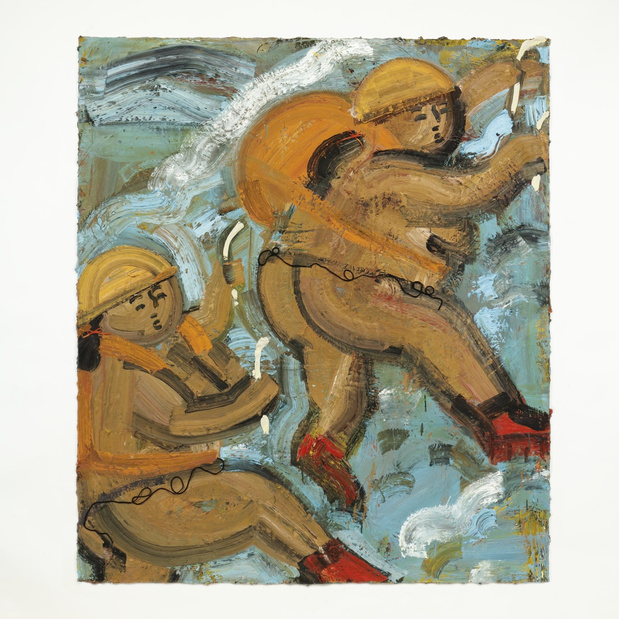
Monica Kim Garza — Galerie ruttkowski;68
Sometimes warmly dressed, sometimes absurdly bare, sometimes languid and sometimes focused, the delirious women of Monica Kim Garza, presented at the ruttkowski;68 gallery, make the codes of art history dance (from Eugène Leroy to Matisse, from Léger to Gauguin, from Picasso to Friedrich, to name only a few), as well as those of social representation, throughout a journey that is as welcoming as it is radical.
As generously sketched by the artist as they are reduced to their undulations, the bodies assemble into satiated spheres and ovoids, magnetic poles where painted matter, in dialogue with Eugène Leroy’s singular touch, unfolds its own topography and modulates the realities of planes and backgrounds, of bearer and borne. Light, captured by matter, finds its own paths to emerge, at the edge of thick strokes that give these bodies identity and face, or precisely within the absence of any clear junction between their limbs and the space they inhabit.
Through this female body, Monica Kim Garza unfolds the symbolic — yet tangible — scale of an exploration of time, and, like her subjects, traces its course backward. Much like painting itself, this body unites different temporalities and carries the weight of a complex history — one marked by generations and subjugation — while simultaneously asserting the present, an ever-possible emancipation.
The hierarchy of the visible fades behind an anarchy of gesture, a sensitive and untamed reorchestration that follows the same secret path as the logic of her narrative, where episodes of hiking succeed one another, their reasons impossible to grasp. Faced with this elusive chain of causality, one might as well drift along with the senses and experience the ascent of their own chain, that of painting itself.
And in turn, arm oneself with these “good old raisins and peanuts”, indispensable to any hike, which gives the exhibition its title. It is almost a matter of losing oneself as an act of good sense, of surrendering to this rusticity that cares little for the codes of representation, yet never renounces its desire for ornament, its taste for display, its pleasure in being seen.
A lesson in the capacity of art to transform the simplicity of a subject into a complex network of values, volumes, tones, and layers of meaning, bringing us back, always, to the very center of the problem of representation: both the one assigned to us and the other, far more delightful, that painting manages to uncover.









